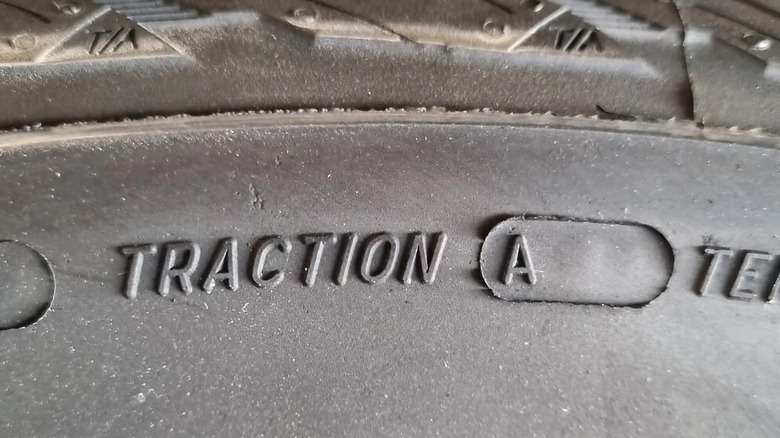Tire traction ratings are an essential factor to consider when purchasing new tires, yet many drivers overlook their significance. These ratings, part of the Uniform Tire Quality Grading (UTQG) system developed by the U.S. Department of Transportation’s National Highway Traffic Safety Administration (NHTSA), offer valuable insight into how well a tire can stop on wet pavement. Understanding these grades empowers drivers to make informed decisions based on their driving conditions and safety needs.
What Do Tire Traction Ratings Mean?
Tire traction is graded on a scale from AA to C, with AA being the highest possible rating and C the lowest. The grading reflects the tire’s ability to stop quickly on wet surfaces. Tires rated AA have the shortest stopping distance in wet conditions, while those rated C perform the weakest in the same scenario. It’s important to note that higher-rated tires often come at a premium price and may be found more commonly on high-performance vehicles like sports cars.
Here’s a breakdown of what each grade signifies in terms of performance:
- AA: Offers superior grip on both asphalt and concrete when wet. This requires a coefficient of friction above 0.54 on asphalt and 0.38 on concrete.
- A: Still provides strong wet braking performance but slightly less than AA-rated tires. Minimum thresholds are 0.47 on asphalt and 0.35 on concrete.
- B: Adequate for general use but not optimized for extreme wet weather performance. Requires at least 0.38 on asphalt and 0.26 on concrete.
- C: Meets minimum federal standards but offers limited traction under wet conditions. Performance falls below the B rating.
How Are Traction Ratings Determined?
The process for determining these ratings is highly standardized. Testing occurs on government-certified skid pads made of either asphalt or concrete. A tire mounted on a skid trailer is pulled behind a vehicle at 40 mph over wet test surfaces. Once the brakes are locked, the tire slides, allowing engineers to measure the coefficient of friction — essentially how much grip the tire maintains during a skid.
These tests are repeated multiple times to ensure consistency and accuracy. Only then is the tire assigned its official UTQG traction grade.
Should You Always Choose the Highest Traction Rating?
While AA-rated tires offer the best wet-weather braking, they aren’t always the best choice for every driver. For example, ultra-high-performance tires with soft rubber compounds tend to wear out faster than harder compounds used in lower-rated tires. Therefore, there’s often a trade-off between grip and longevity.
In fact, most everyday drivers in North America find that tires rated “A” provide ample traction for typical road conditions. According to industry data, A-rated tires dominate the market due to their balanced performance and durability. Ratings of B and C are far less common and usually not recommended unless cost or specific vehicle requirements dictate otherwise.
Additionally, some types of tires — such as winter tires, off-road tires, and spare tires — are not required to carry UTQG ratings. Their performance in wet conditions must be assessed using other metrics or real-world testing.
Other Factors That Affect Real-World Traction
It’s also crucial to understand that traction ratings reflect performance only when the tire is brand new. As treads wear down over time, grip diminishes. Moreover, proper inflation, alignment, and driving habits all influence how well your tires grip the road. Even the type of vehicle you drive and where you live can impact which tire will serve you best.
Ultimately, the traction rating should be considered alongside other UTQG ratings such as treadwear and temperature resistance. By taking a holistic approach to tire selection, drivers can ensure both safety and long-term value.







